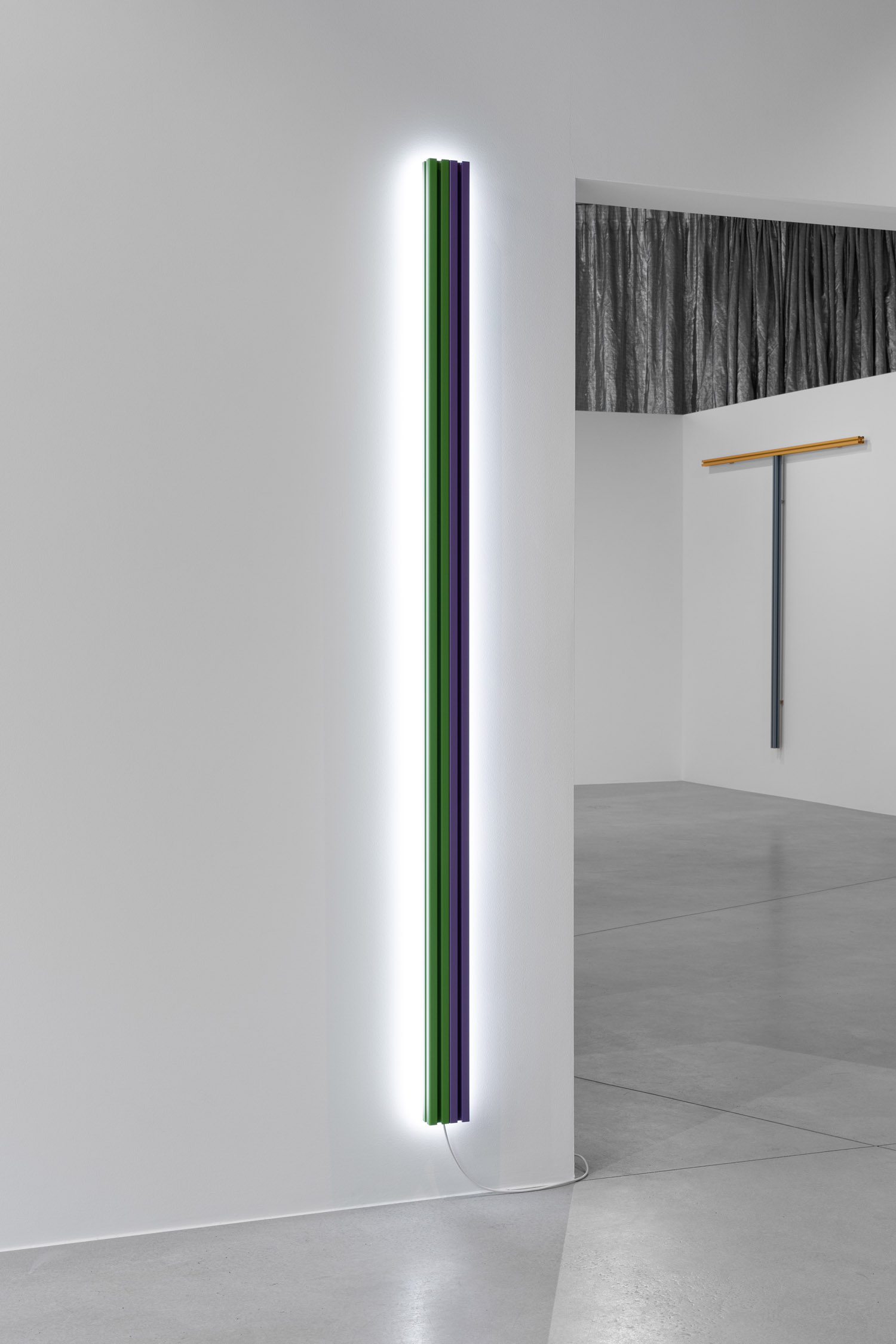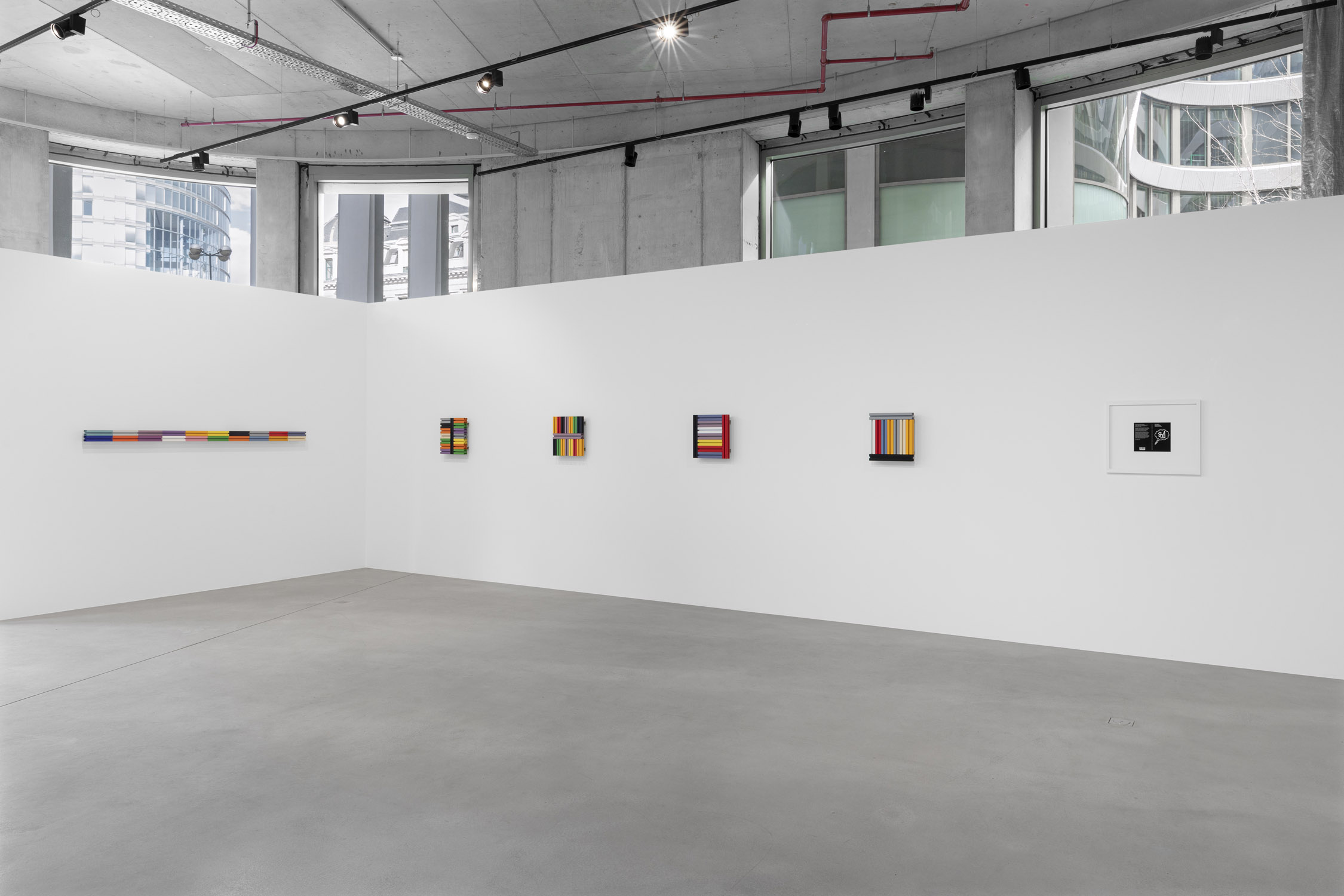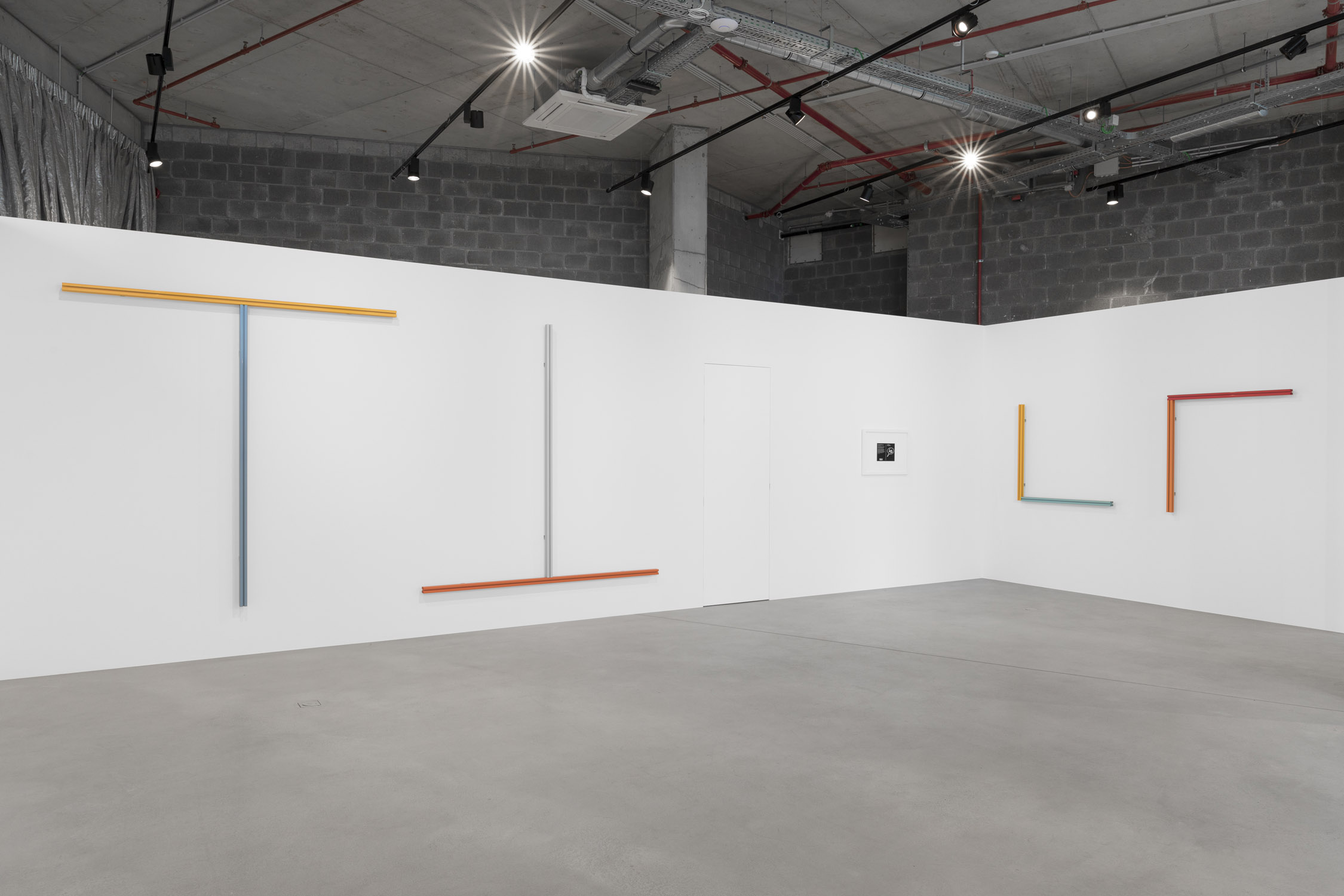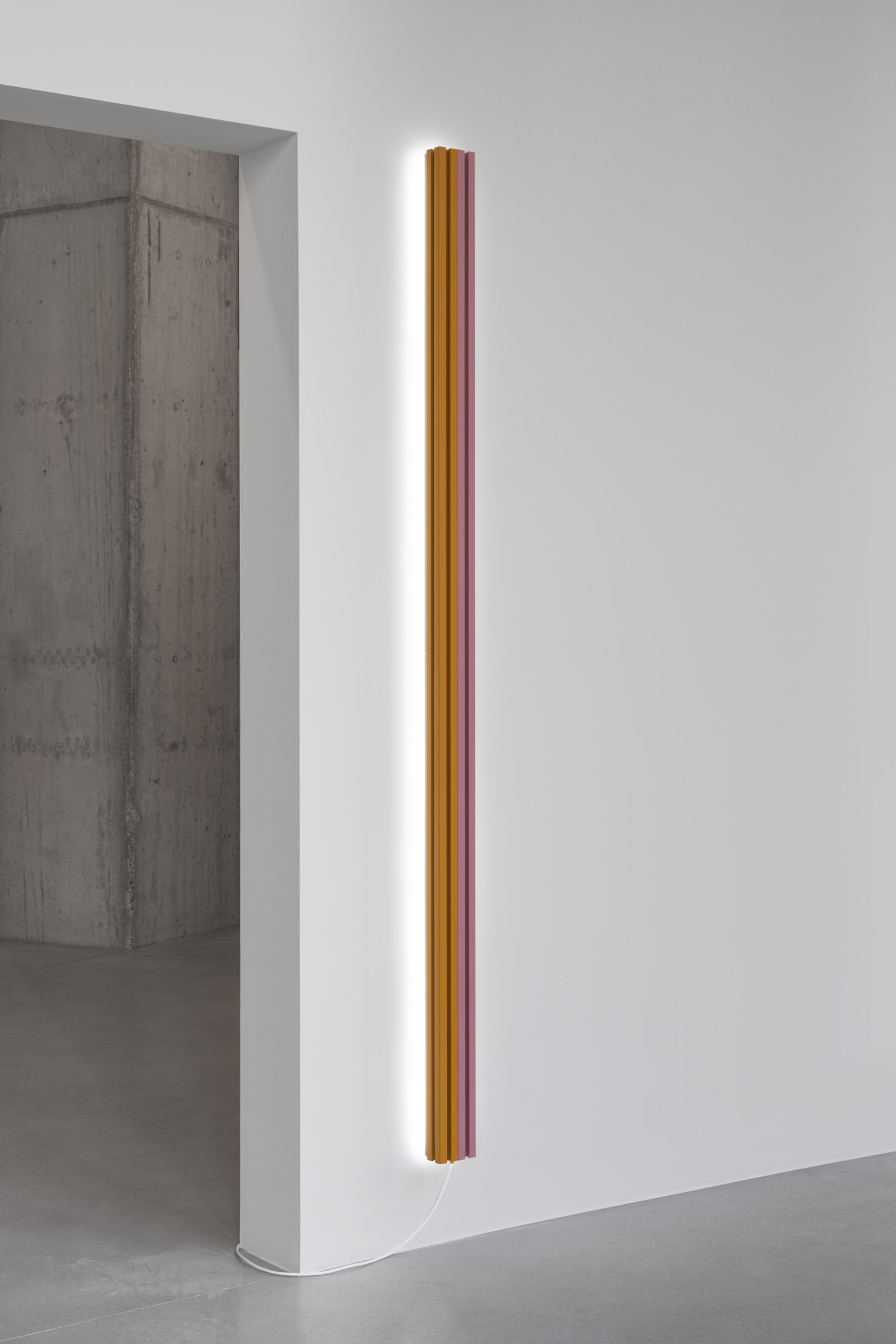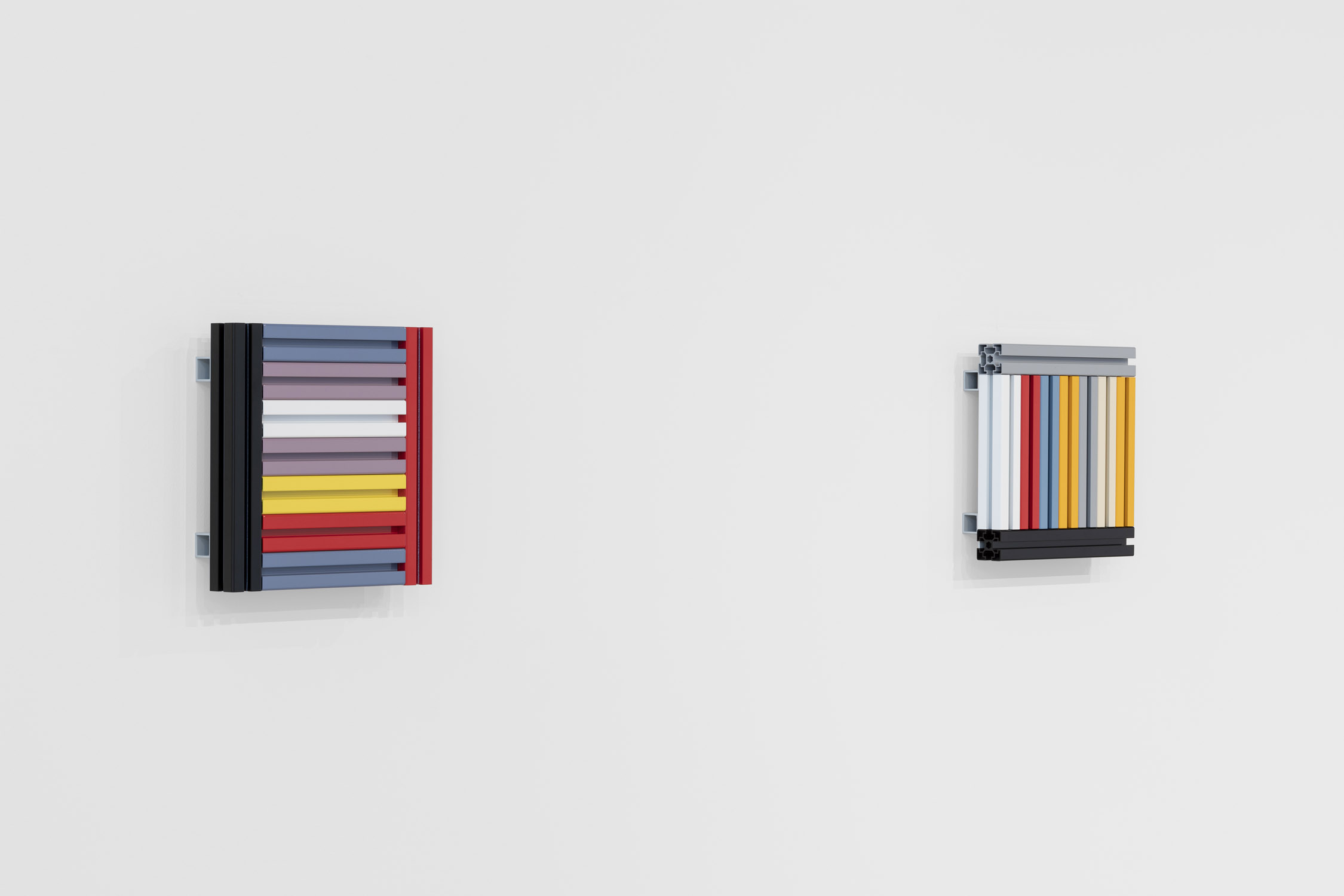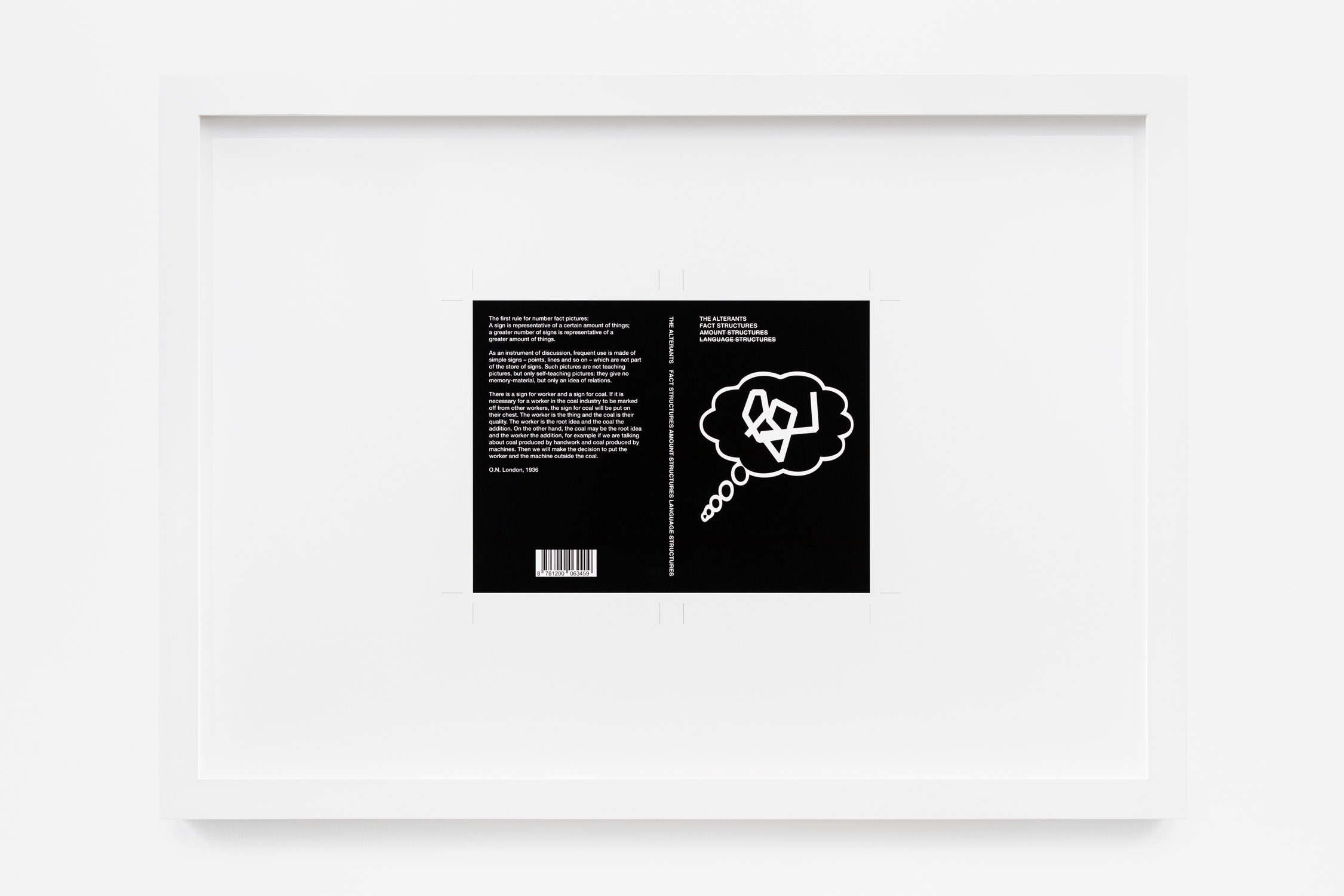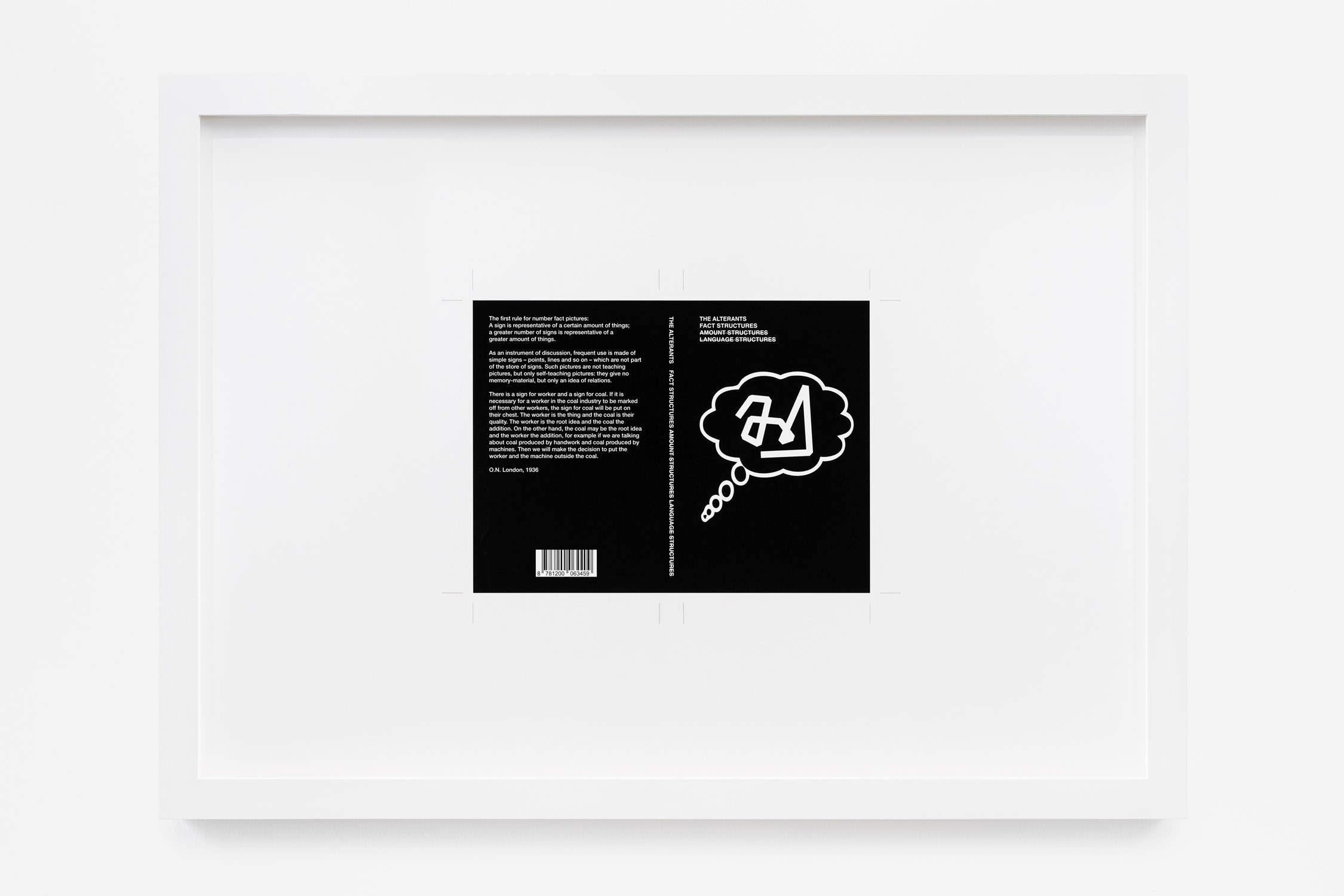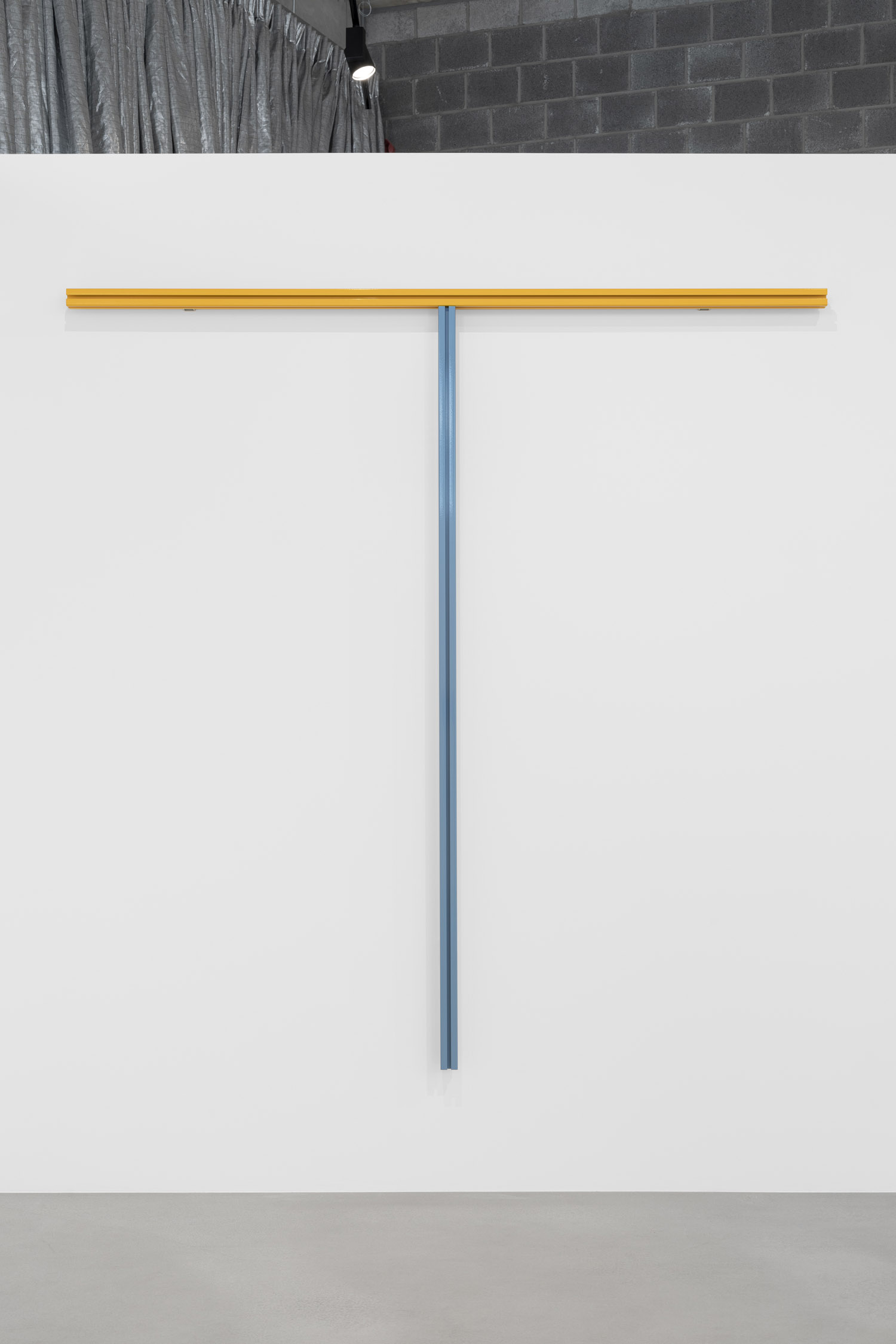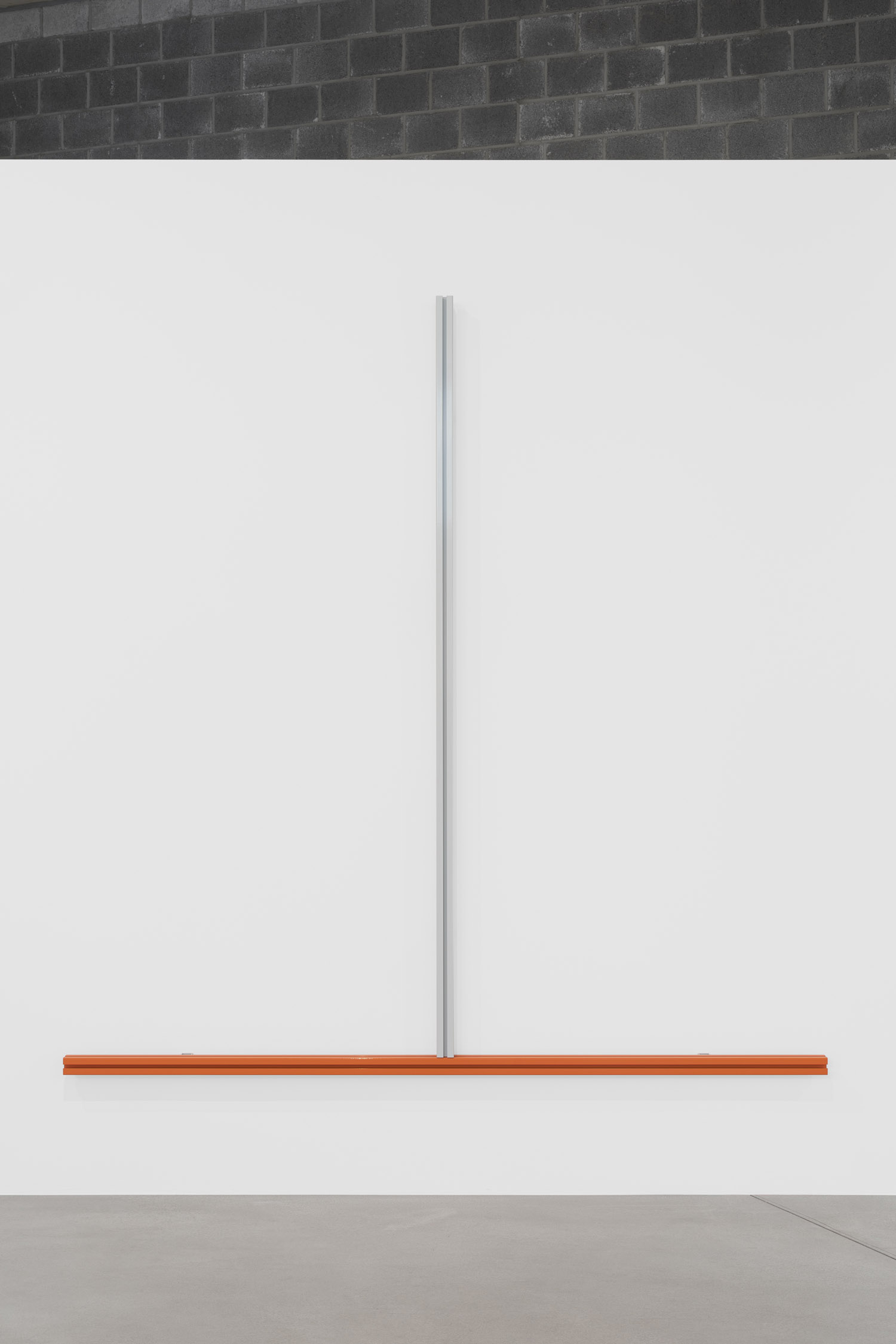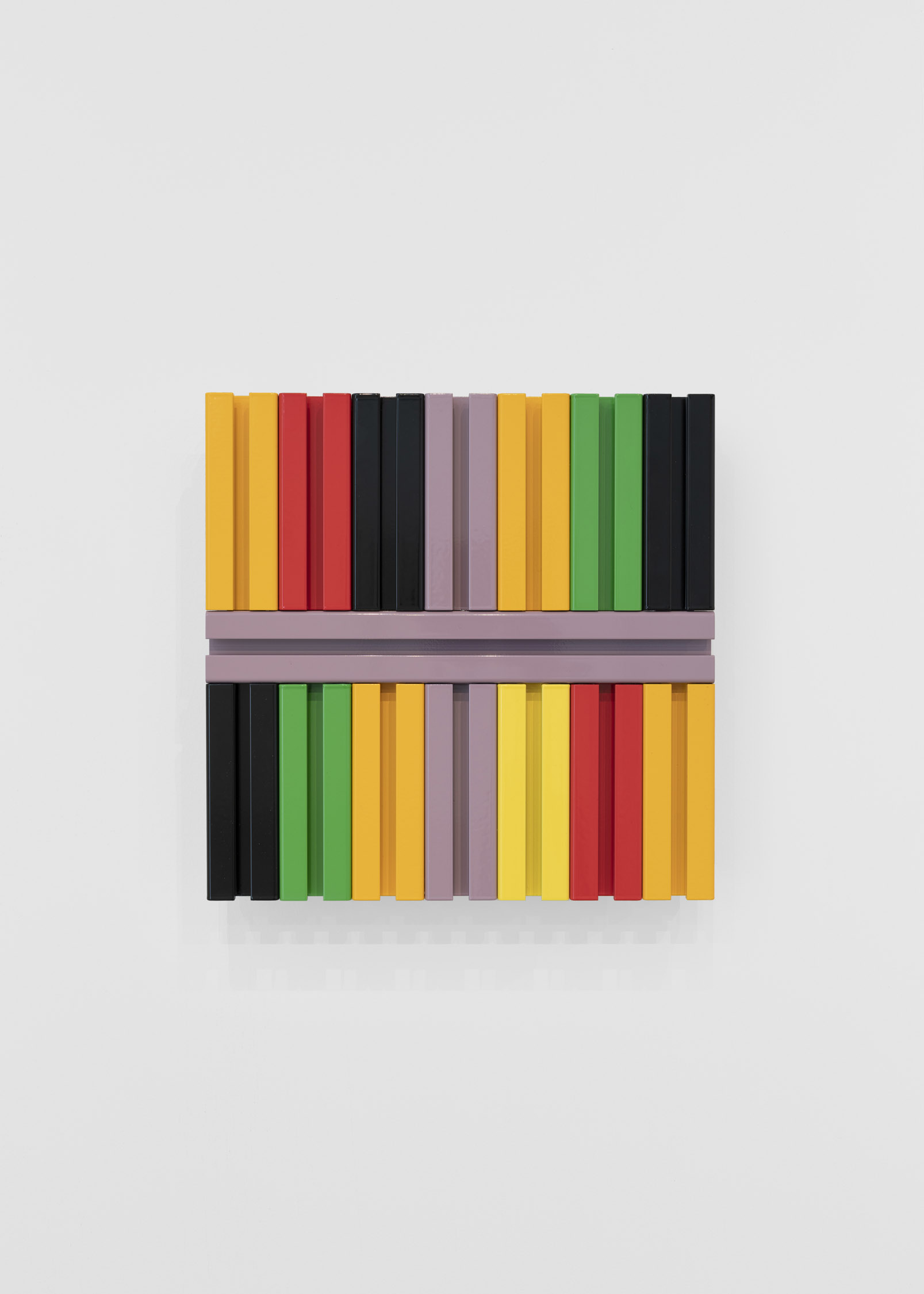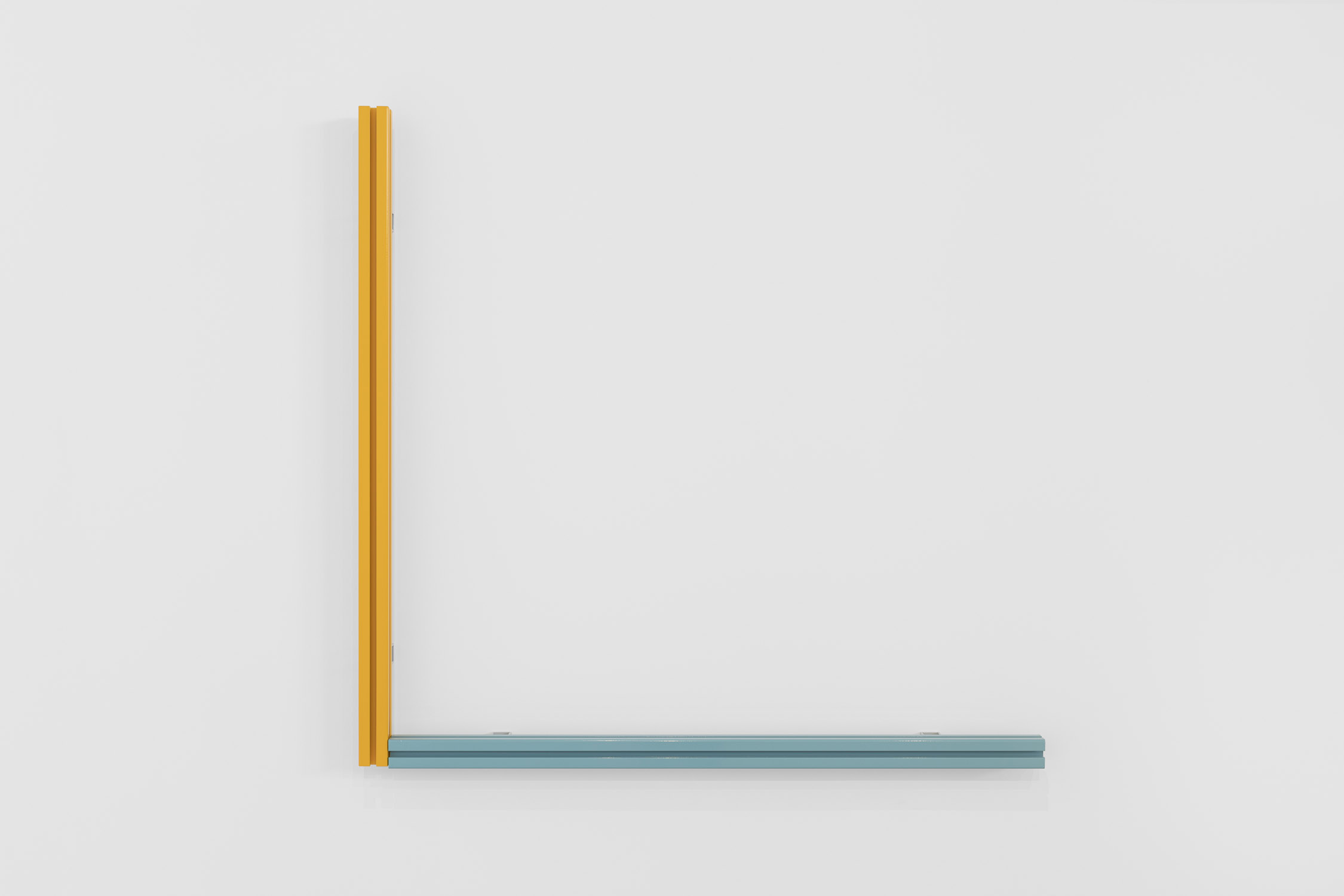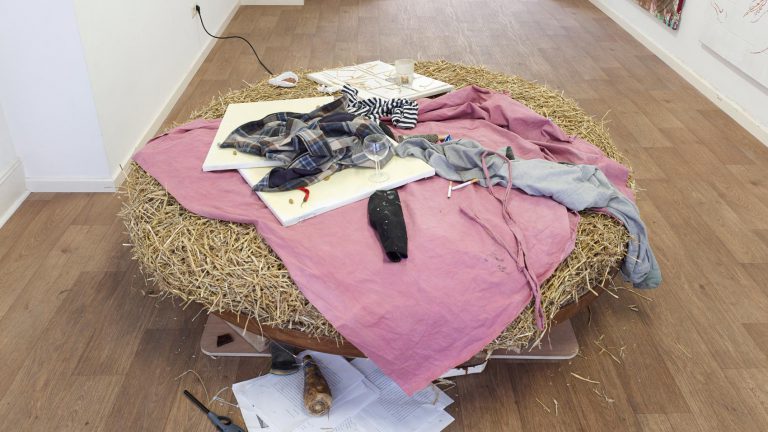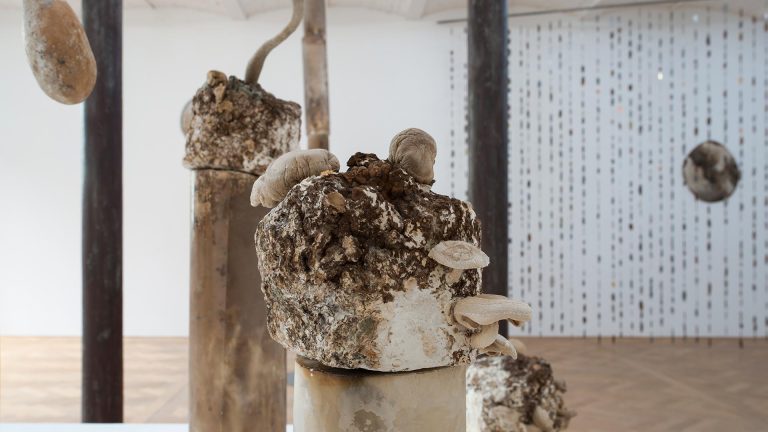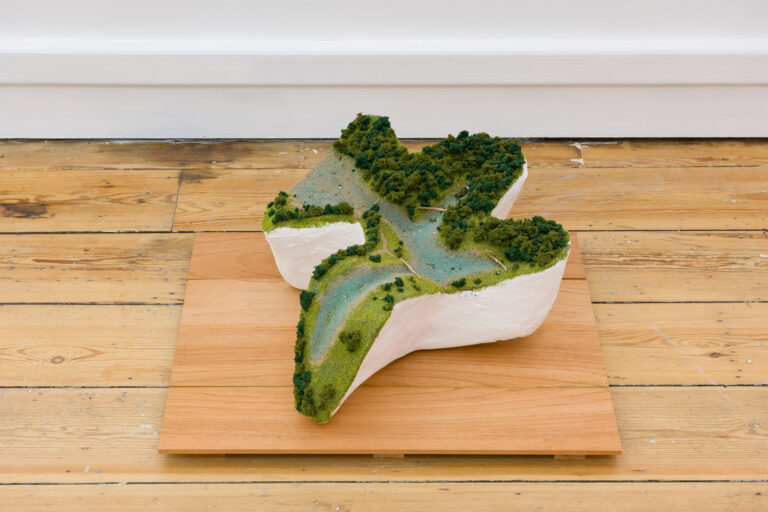Artist: Liam Gillick
Exhibition title: Fact Structures Amount Structures Language Structures
Venue: KIN, Brussels, Belgium
Date: March 1 – April 19, 2024
Photography: ©Useful Art Services, all images copyright and courtesy of the artist and KIN, Brussels
Note: Exhibition’s floor plan is available here
KIN presents an exhibition of new work by Liam Gillick: Fact Structures Amount Structures Language Structures.
Liam Gillick’s newest production elevates and transforms aluminium t-slot extrusions, a fundamental form of advanced production. The resulting art works, while captivating, defy conventional description. They hover in a reality where representation gives way to suggestion, serving as enigmatic placeholders for modernity and the complexities of social production.
Aluminium t-slot extrusions have a structural adaptability that allows for the generation of smooth, seemingly neutral surfaces. Generally resisting critical attention, the material is central to advanced production in laboratories, semi-conductor facilities and computer controlled manufacturing. Typically unseen, the material paradoxically serves as the staging for rendering the ineffable tangible. Advanced production is created using a material designed to efface itself.
Gillick’s transformation and elevation of the material into a new language of abstraction results in a delamination of meaning in relation to any functional interpretation and is rooted in the use of a complex form that produces ever more complex forms.
Central to the artist’s abstract process is the use of vivid colour from the RAL colour system, developed in 1920s Germany. This interest in an optimistic period where new systems of understanding were proposed and rationalised is echoed in the muted announcement of a book that accompanies each work. Each unique book design shows a potential abstract symbol to represent the elusive processes of production that surround us. Drawing on the work of Marie and Otto Neurath’s Isotype system, the artist suggests the difficulties we face when trying to convey complex information today. Combined these new works embody a dual nature – facilitating and resisting rationalisation at the same time.
The persistent theme in Gillick’s work – elevation and delamination – shows a vulnerability embed-ded in the semiotics of technology. Learning from Yuk Hui’s concept of techno diversity, the artist strips away layers in an attempt to echo the inher-ent complexity of contemporary discourse, further blurring the boundary between representation and abstraction.
Through this new body of works, Liam Gillick reaffirms his multifaceted practice, meaning to address new and evolving systems of ideological control. His work is articulated in the ongoing tension between minimalist designs – questioning the language of renovated spaces – and a critical approach rooted in text and writing, avoiding a singular starting point in his practice. Gillick invites us to contemplate the intricate interplay between materiality, representation, and meaning — by definition, elusive.
Liam Gillick finds his inspiration in the zone where decisions get made and has aimed, throughout the years, to destabilize these boundaries, to challenge the frameworks of engagement. A space of compromise, strategy, contingency and speculation that resists didactic interpretation and instead alludes to mutable and evasive power structures of our time.

